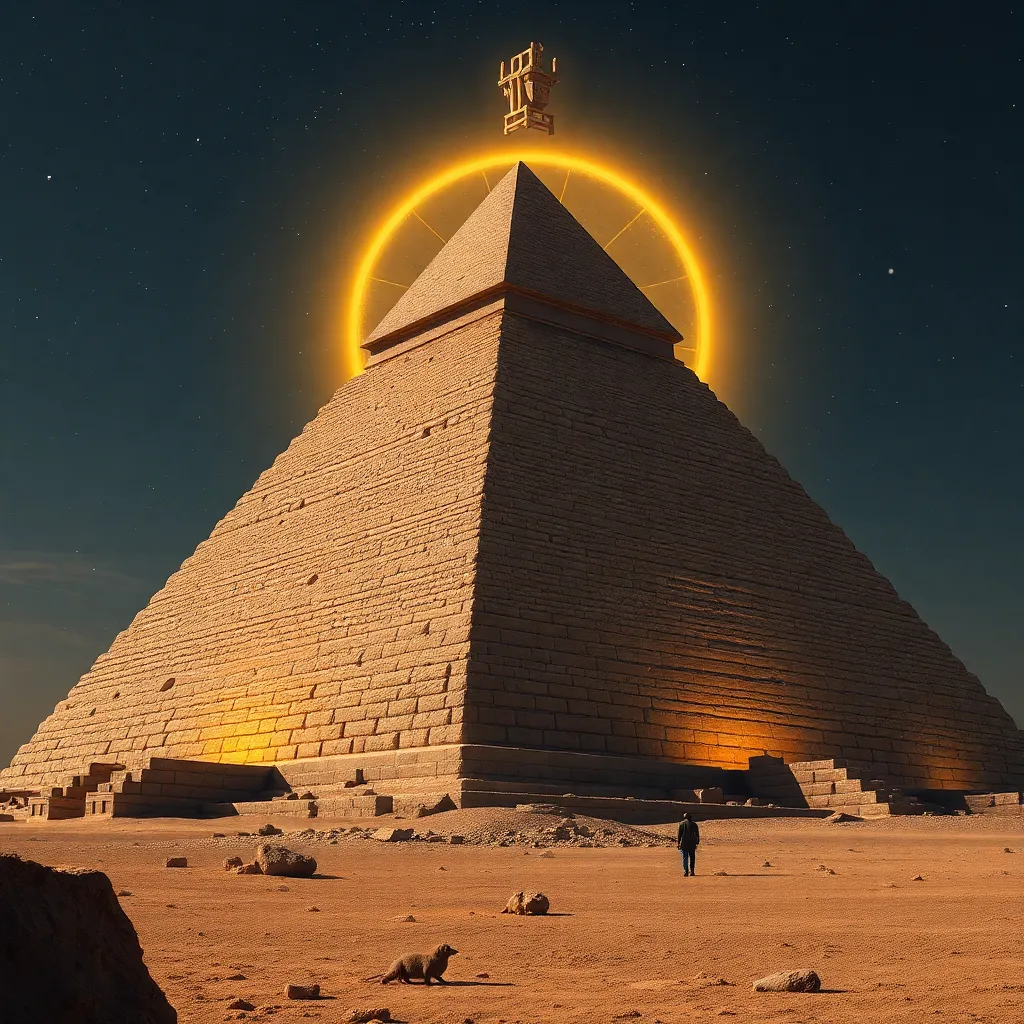The Role of Astronomy in Pyramid Construction
I. Introduction
The construction of pyramids represents one of the most remarkable feats of engineering and architecture in ancient civilizations, particularly in Egypt. These monumental structures not only served as tombs for pharaohs but also as symbols of their power and religious beliefs. Understanding the methods used in their construction reveals the intricate relationship between architecture and astronomy.
Astronomy played a pivotal role in the architectural techniques of pyramid construction, influencing their orientation, design, and alignment with celestial bodies. This article aims to explore the connection between ancient astronomical knowledge and the construction of pyramids, shedding light on how the ancients utilized their understanding of the cosmos to achieve architectural marvels.
II. Historical Context of Pyramid Construction
Pyramid building in ancient Egypt dates back to the Third Dynasty, with the Step Pyramid of Djoser being one of the earliest examples. Throughout the Old and Middle Kingdom periods, the construction techniques evolved, leading to the development of the true pyramids that we recognize today, like the Great Pyramid of Giza.
Key architectural advancements during this era included:
- The use of large limestone blocks and precise stone-cutting techniques.
- The development of complex burial chambers and corridors.
- Innovative structural designs that allowed for the stability of massive edifices.
The intersection of religion, culture, and science was vital in pyramid construction, as these structures were not merely tombs but also served as part of the Egyptians’ beliefs about the afterlife and the cosmos. The alignment of these structures with celestial bodies reflected the Egyptians’ reverence for the heavens.
III. Ancient Astronomical Knowledge
Ancient civilizations possessed a sophisticated understanding of astronomy, allowing them to observe celestial bodies with remarkable accuracy. They developed calendars based on the cycles of the moon, sun, and stars, which were crucial for agricultural planning and religious festivals.
Methods used to observe celestial bodies included:
- Using simple tools like gnomons to track the sun’s shadow.
- Observing the heliacal rising of stars, which marked significant seasonal changes.
- Creating star charts and aligning structures with constellations.
Celestial events, such as solstices and equinoxes, held great significance in ancient cultures, serving as markers for agricultural activities and religious ceremonies.
IV. Alignments and Orientation of Pyramids
The orientation of pyramids concerning cardinal points is a fascinating aspect of their construction. Most Egyptian pyramids are aligned with incredible precision to the cardinal directions: north, south, east, and west.
Specific examples of this include:
- The Great Pyramid of Giza: This pyramid is aligned with an accuracy of 0.067 degrees to true north.
- Pyramid of Khafre: This structure similarly exhibits precise orientation, reflecting the builders’ advanced understanding of astronomy.
The role of stars in pyramid construction was significant, with important constellations like the North Star and Orion’s Belt guiding the builders. It is believed that the Egyptians associated the constellation Orion with Osiris, the god of the afterlife, which further emphasizes the spiritual significance of these astronomical alignments.
V. Astronomical Calendar and Timekeeping
Astronomy was integral to defining seasons and calendars in ancient Egypt. The Egyptians developed a solar calendar that consisted of 365 days, which was essential for agriculture.
The relationship between agricultural cycles and pyramid construction is evident, as many pyramids were built during the inundation period when the Nile River flooded, making it easier to transport heavy stones. Evidence of timekeeping methods utilized by ancient builders includes:
- Water clocks and sundials to measure time during the day.
- Calendrical records that tracked agricultural cycles and significant celestial events.
VI. Symbolism of Astronomy in Pyramid Design
The connection between pyramids and celestial deities is deeply rooted in ancient Egyptian belief systems. Pyramids were not just physical structures; they symbolized the rays of the sun and served as a means for the pharaohs to ascend to the heavens.
Astronomical features were intricately incorporated into pyramid architecture, such as:
- Alignments with the sun’s path during solstices.
- Design elements that mirrored celestial patterns, such as the layout of pyramid complexes.
Interpretations of pyramid designs related to the cosmos further reveal how the ancient Egyptians perceived the universe and their place within it, emphasizing a profound connection between the terrestrial and the celestial.
VII. Archaeological Findings Supporting Astronomical Theories
Recent archaeological discoveries have shed light on the role of astronomy in pyramid construction. Sites with astronomical alignments have been documented, supporting the theories that ancient builders utilized celestial knowledge in their architectural endeavors.
Case studies of archaeological sites include:
- The discovery of alignments at the Pyramid of Djoser, indicating a deliberate orientation to celestial events.
- Investigations at the Giza Plateau revealing potential astronomical observatories used by ancient Egyptians.
Scholarly debates continue regarding the extent of astronomical knowledge possessed by ancient civilizations, with ongoing research uncovering new findings that challenge previous assumptions.
VIII. Conclusion
In summary, the construction of pyramids in ancient Egypt and other cultures was profoundly influenced by astronomical knowledge and practices. The alignment of these structures with celestial bodies reflects a sophisticated understanding of the cosmos, which played a crucial role in their architectural design.
The lasting impact of astronomy on ancient architecture is evident, as it not only shaped the physical forms of these monumental structures but also influenced the cultural and religious beliefs of the civilizations that built them. Future implications for the study of ancient civilizations and their astronomical knowledge remain vast, as researchers continue to explore the intricate relationship between the heavens and the earth.




